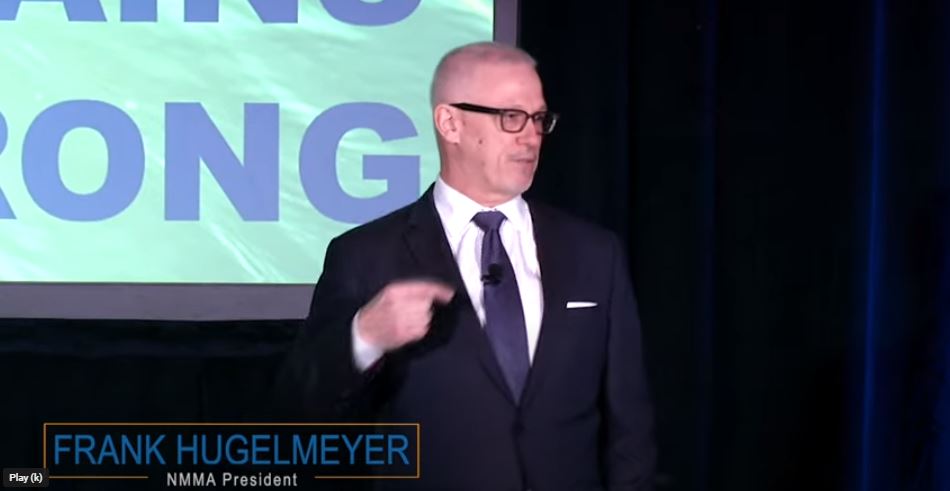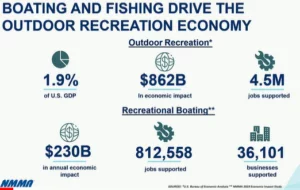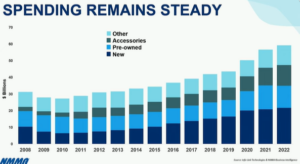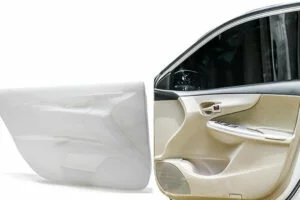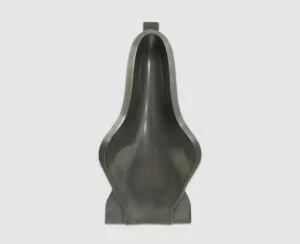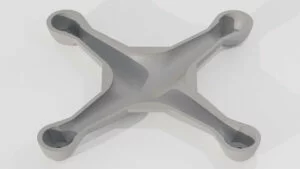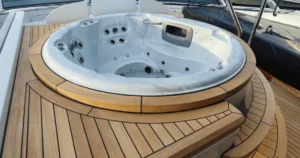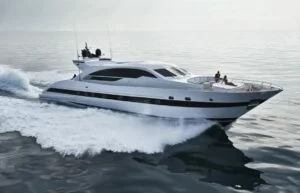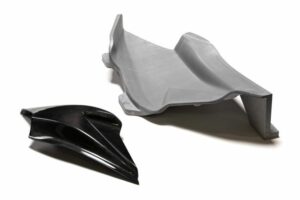The maritime industry has recently undergone significant shifts in response to economic changes. In 2023, the boating and fishing industries substantially impacted the US economy, contributing $862 billion, equivalent to 1.9% of the GDP. Despite fiscal challenges, various segments showed resilience, with smaller boats facing hurdles while larger, more luxurious boats maintained a positive trajectory. At IBEX 2023, Frank Hugelmeyer, President of the National Marine Manufacturers Association, highlighted the industry’s imperative to attract consumers to the boating lifestyle amid heightened competition.
Against this dynamic backdrop, boaters and manufacturers set sail, confronting challenges and seizing emerging opportunities. The marine industry is poised for significant growth until 2024, particularly in ship and boat building and repairing, reaching $284.22 billion in 2023. Projections indicate a further increase to $303.65 billion in 2024, reflecting a compound annual growth rate (CAGR) of 6.8 percent.
Resilience in overcoming challenges and a competitive boat sales landscape pave the way for an exciting year ahead. Anticipation extends to the superyacht realm, where advanced concepts are set to elevate industry standards in the upcoming year.
Superyacht Trends in 2024
In 2024, trends for the superyacht industry revolve around combining innovation, aesthetics, and functionality for a year of revolutionary ideas out at sea.
The Foredeck Takes Center Stage
As the year commences, superyacht design trends evolve, particularly concerning the foredeck. Designers experiment with new, flexible configurations that transform outdoor areas, such as sun and helicopter landing pads. The foredeck now includes features like an “all-season terrace,” providing discreet relaxing spaces with amenities like jacuzzis and fixed sun pads. Furthermore, there is a noticeable shift in deck materials, with synthetic alternatives challenging traditional materials such as teak, offering sustainability and unprecedented customization.
Volume and Space Prevail
Yacht design trends shift towards increased volume and space, in contrast to the conventional expectation of sleek lines and cutting-edge speeds. The focus is on spacious interiors, high ceilings, and family-friendly layouts, redefining luxury at sea. Striking a balance between comfort and functionality, propulsion systems and hull design innovations ensure larger living areas don’t compromise performance. This is particularly relevant for charter yachts as charterers seek a home-like ambiance on the water.
Textured Ceilings Set the Tone
Interior design takes a creative turn with textured ceilings designed to add visual interest indoors. Examples include undulating “wooden wave” installations and thatched-roof ceiling designs.
Long Range and Low Consumption
Yacht design takes a significant turn towards extended range and fuel efficiency. Explorer yachts, once a niche market, are gaining popularity as buyers seek autonomy and efficiency. The desire for remote destinations and seaworthiness drives the demand for explorer yachts, leading to advanced propulsion systems and energy-efficient technologies that reduce environmental impact.
As environmental awareness takes center stage, yacht owners want to explore with minimal ecological impact. To this end, expedition yachts, emphasizing advanced propulsion and energy efficiency, gain popularity among enthusiasts, enabling exploration while minimizing the carbon footprint.
Massivit’s Innovative Solutions in Marine Manufacturing
In the ever-evolving maritime industry, additive manufacturing (AM) has become a revolutionary force, automating boat building and repairs. Championed by Massivit, industrial 3D printing transforms yacht design by accelerating maintenance processes, creating large-scale molds, and crafting lightweight components. Beyond efficiency, the appeal of additive manufacturing lies in its customization potential, allowing the production of bespoke yacht parts. Focused on customization through directly printed large molds and full-scale prototypes, Massivit stands as a testament to the industry’s commitment to innovation and efficiency.
Navigating the Seas of Transformation
As 2024 unfolds, the marine industry finds itself at the intersection of profound transformation and relentless innovation. With unwavering resolve, the sector adapts to challenges and seizes opportunities, spearheaded by Massivit’s pioneering additive manufacturing technology, reshaping the foundations of boat building.
The year ahead promises continued evolution, with emerging yacht design trends laser-focused on maximizing space, low-impact, and aligning with economic considerations. The synergy between the rapid advancements in additive manufacturing and the ever-evolving design landscape foretells a future where efficiency, sustainability, and luxury seamlessly converge.
In the broader industry landscape for 2024, insights from IBI’s editor-in-chief, Ed Slack, illuminate the path forward. A more challenging yet optimistic year looms, marked by collaborative endeavors, a consumer-centric ethos, and a spotlight on servicing. As businesses adeptly navigate industry cycles and shifting consumer needs, they are poised to embrace innovative technologies, ushering in an era that redefines the maritime landscape. Ed Slack’s observations point to a collective industry effort, emphasizing collaboration and recognizing pooled resources as catalysts for achieving agile, innovative results. The forecasted shift towards a consumer-centric approach signals boatbuilders adapting to fulfill the desires of new buyers seeking seamless ‘cradle to grave’ boat ownership experiences.
Moreover, the spotlight on servicing underscores the pivotal role of boatbuilders in catering to the evolving needs of consumers. Navigating the industry’s cyclical nature and consumers’ dynamic preferences requires adaptability. Businesses are expected to flex and evolve, incorporating cutting-edge innovations that reshape the traditional boating experience. Ed Slack emphasizes the industry’s imperative to stay attuned to consumer needs, making 2024 a year where boatbuilders and manufacturers must exhibit agility and responsiveness to emerging trends.
Embarking on this thrilling and transformative journey into 2024, these insights serve as a compass, guiding the industry toward new horizons.


